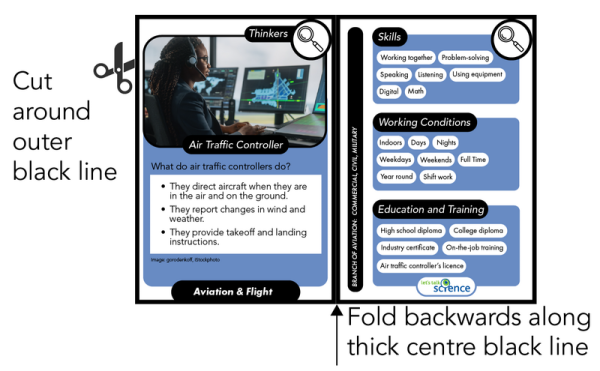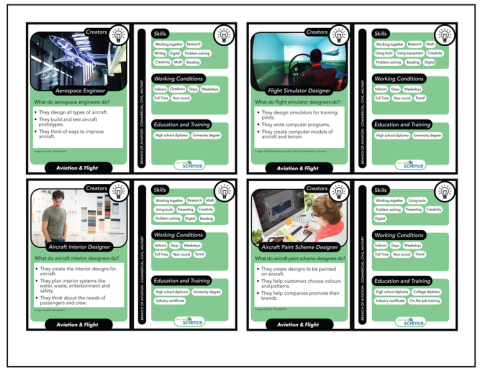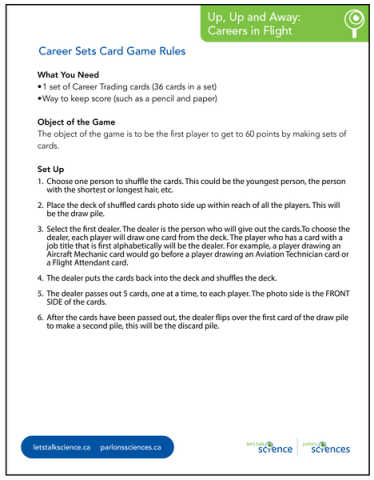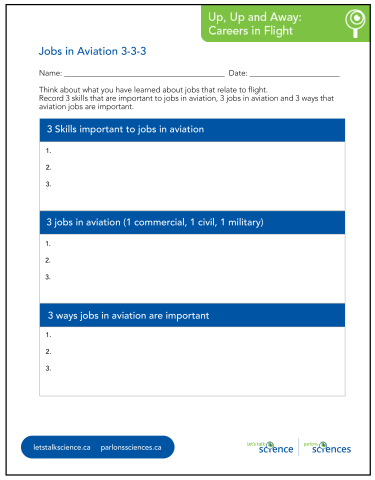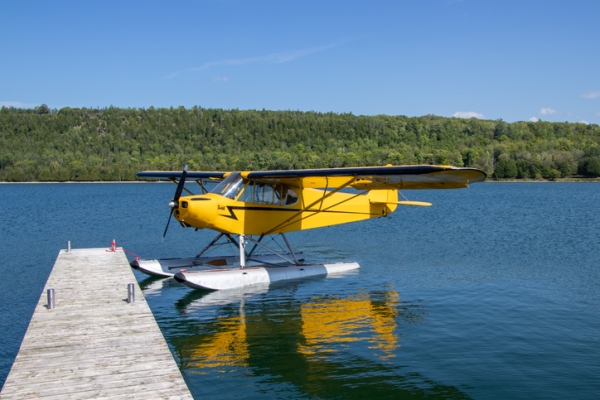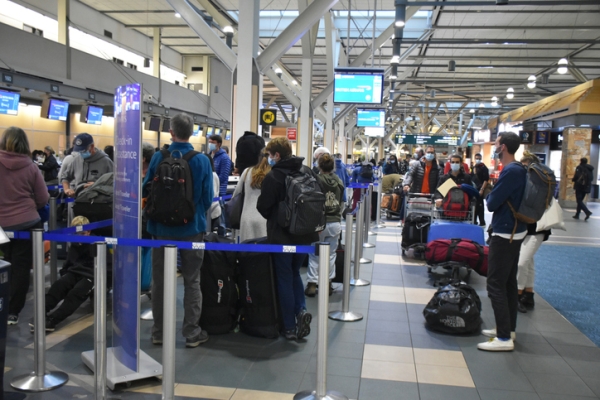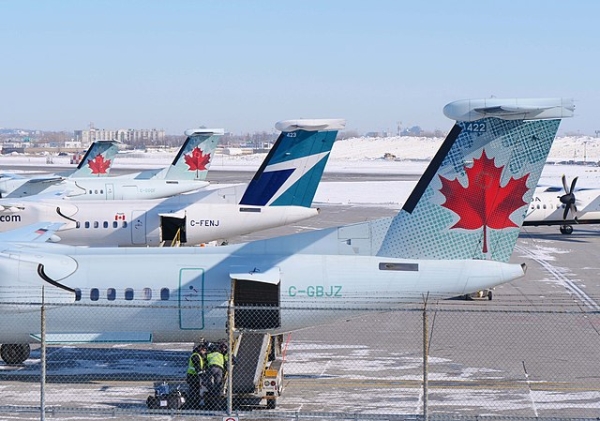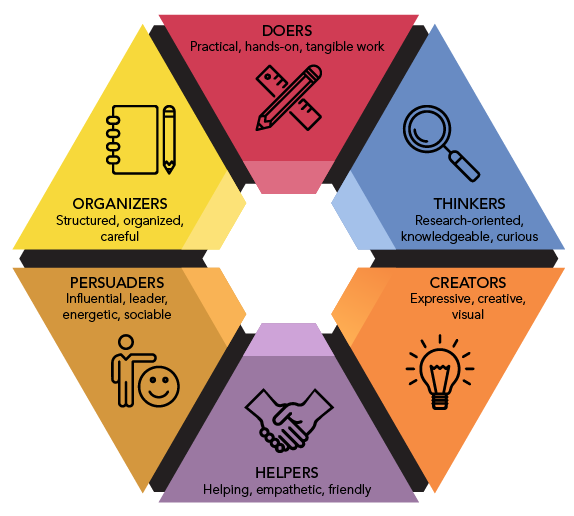Up, Up and Away: Careers in Flight

Airport terminal with airplane (Artis777, iStockphoto)

Airport terminal with airplane (Artis777, iStockphoto)
How does this align with my curriculum?
Students will learn about the wide variety of jobs related to the aviation industry.
Overview
| Activities | Timing | Student Grouping | Description |
|---|---|---|---|
| Minds-On: Who works in the aviation industry? | 10-15 minutes | Large group | Students will brainstorm and share the range of jobs in the aviation industry they are familiar with. |
| Action: Playing with Flight Jobs | 20-30 minutes | Small group | Students learn about the required skills, working conditions and required education of a variety of aviation careers through playing a game using “trading cards”. |
| Consolidation: Reflection | 10-15 minutes | Individual and Large group | Students will reflect on their new knowledge, and pose new questions, about jobs related to flight |
This lesson can be done over a few days.
Materials and Preparation
Teaching and Learning Activities
This icon indicates potential assessment opportunities
Minds-On: Who works in the aviation industry? (10-15 min.)
| Instructions | Teaching Tips |
|---|---|
Using a brainstorming strategy, such as Crazy8s, have students think of all the reasons people use aircraft. Responses can include:
Prompt students if they can only think of one or two of these categories. | |
Next, have students brainstorm careers/jobs of people that work with and on aircraft. We say that these people work in the aviation industry. Explain to students that there are three main branches of the aviation industry:
Some jobs are only needed in some branches (e.g., fighter jet pilot), whereas others exist in all (e.g., aviation mechanics). Record student responses on a board, chart paper or digital projection that students can see. If students find this task challenging, you could provide some category prompts such as people who:
These prompts could be written on a board or chart paper for reference. |
LanguageBegin a word wall of terminology used in this lesson such as aircraft, aviation, baggage, cargo, passengers, etc. Continue to add to the wall during the lesson. |
|
Have a discussion with students about how they know of these jobs. Encourage them to share personal connections if they have them, such as going on family trips, going to an airshow or driving by an airport. Students also may have seen people working in these jobs on TV (e.g., Super Wings, the Aviators), in movies (e.g., Disney Planes, Disney Planes Fire & Rescue) or in books. |
Community ConnectionsDiscussion prompts can include:
|
Let students know that there are even MORE jobs in the aviation industry than they listed. It takes many different people to design aircraft, test aircraft, fly aircraft and keep aircraft working properly as well as all of the people who work with passengers on aircraft and the stuff (cargo and baggage) that is carried on aircraft. While people tend to be most familiar with the jobs related to flying (e.g., pilot, flight attendant) most of the jobs in the aviation industry take place on the ground. In the next part of the lesson, students will explore some of these careers in more detail. |
Action: Playing with Flight Jobs (20-30 min.)
| Instructions | Teaching Tips |
|---|---|
Next, explain that students will be playing a game with cards. Organize students into groups of 2 to 6. Groups of four are best, but any number would work. The more groups you have, the more sets of cards you will need to print out. Provide each group with a set of cards from the Career Trading Cards: Aviation Series reproducible [Google doc] [Word doc] [PDF]. Note: You may notice that the cards are colour-coded. These codes represent the six Holland Code career personality types. Knowledge of this code is not necessary for this lesson. See more in the Career Education section in Additional Resources. |
Images and VideosText and images on the cards can be described in detail to students who have visual impairments. |
Explain the rules of the game using the Career Sets Card Game Rules reproducible [Google doc] [Word doc] [PDF]. You can also provide student groups with physical or digital copies of the rules. Listen to students as they are playing, making note of their use of career terminology. Game Variations
|
LanguageStudents could use text-to-speech software such as Google Read and Write to listen to the rules out loud. |
Consolidation: Reflection (10-15 min.)
| Instructions | Teaching Tips |
|---|---|
Lead a class discussion to help students consolidate what they learned by playing the card game. Help students recognize the variety of skills and abilities required for jobs in the aviation industry. Technical and practical skills are usually learned in school, training programs, or on the job. Usually these skills are only used in a specific job. For example, knowing how to use a welding torch is not a skill that is required of a person working in an office setting. Other important skills are useful, and necessary, for many different jobs (communication, teamwork, problem-solving, speaking/presentation, etc.). These are learned in a variety of settings (in the activities they do in school, in extracurricular activities such as sports and clubs, etc.). While these skills are sometimes referred to as “soft skills”, they are very important to a worker’s success in many jobs and are highly valued by employers. |
DiscussionsDiscussion prompts can include:
|
To document their new learning, provide each student with a copy of the Jobs in Flight 3-3-3 reproducible [Google doc] [Word doc] [PDF] to complete. Invite students to share their responses either orally or by submitting to you. |
IdeaStudents could work on the questions independently or in small groups. |
| Conclude by having students reflect on the jobs they learned about in relation to their own interests and potential career pathways. |
DiscussionsDiscussion prompts can include:
|
Background Information for Teachers
Aviation Industry in Canada
Image - Text Version
Shown is a colour photograph of a small plane floating next to a dock.
The plane is bright yellow and teardrop-shaped with a propeller on its nose. It is floating on two long, silver structures attached to the undercarriage. The water below is calm and blue. A wooden dock stretches from the bottom of the image to the floats.
On the other side of the lake is a low hill covered with thick forest. The sky above is bright blue and clear.
Image - Text Version
Shown is a colour photograph of a long line of people in a large, open space.
People are standing in single file, with bags and suitcases at their feet. The line zig zags up and down the room, between barriers made from metal posts and blue ribbons. The front of the line is the left-hand wall, where several screens are visible above people's heads. More screens are mounted on the ceiling in the middle of the room. The room is so long that the far end is not visible. More lines of people stretch off into the distance.
Image - Text Version
Shown is a colour photograph of four planes on a runway.
Only the rear half of each plane is visible. They are arranged in a neat row on grey tarmac. Each one is printed with a logo on its tail.
The closest tail has a read maple leaf on a pattern of blue dots on a pale blue background. The second tail has a white V shape pointing to the back of the plane. This is surrounded by teal and dark blue colours. The last two tails carry the same logos as the first.
A chain link fence runs across the bottom of the image. The rear doors of the first two aircraft are open, and people in reflective vests work nearby. The tarmac is dusted with snow, and the land beyond the runway is completely white. Buildings can be seen all along the horizon in the distance. The sky above is hazy and pale blue.
